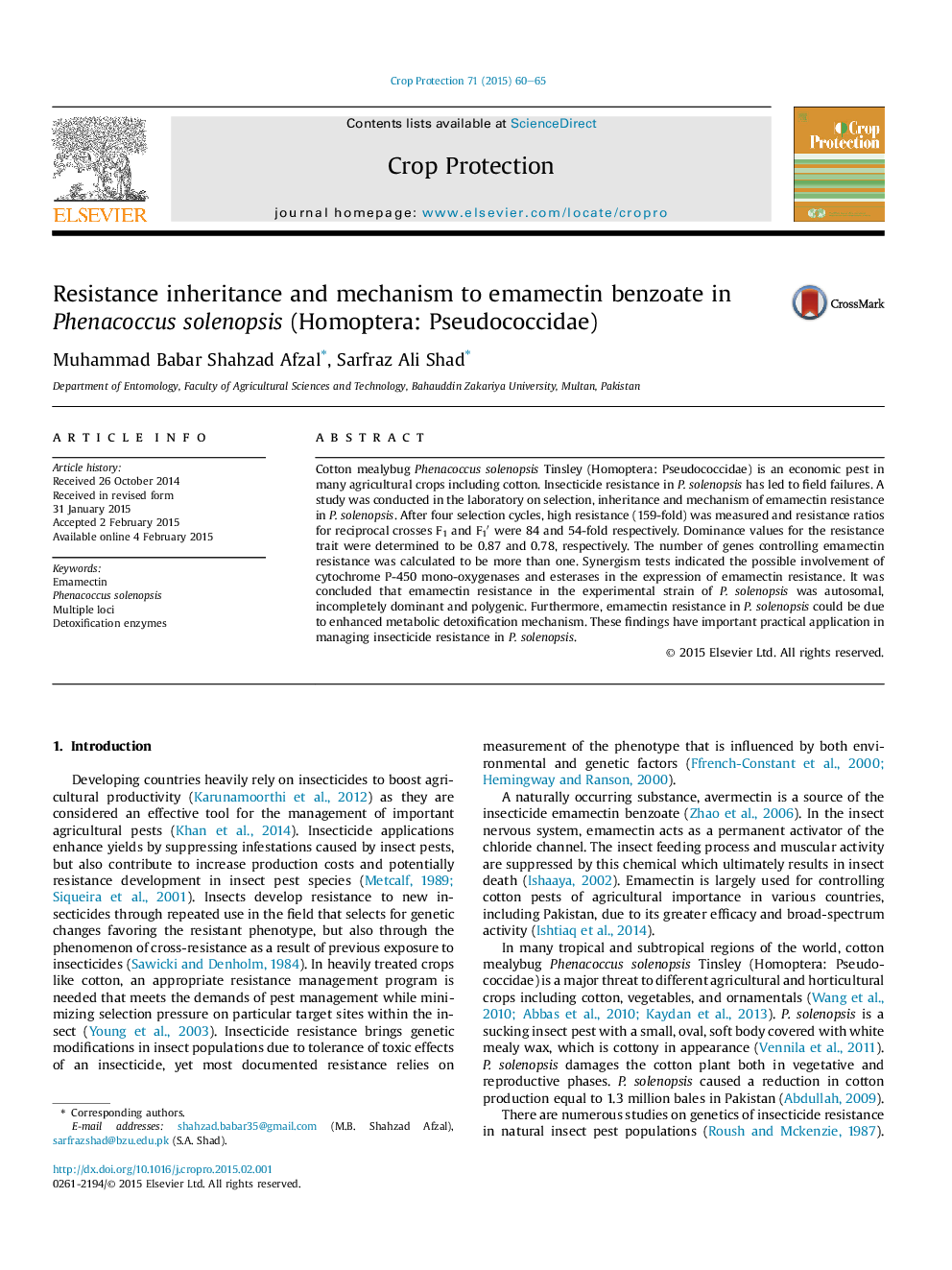| کد مقاله | کد نشریه | سال انتشار | مقاله انگلیسی | نسخه تمام متن |
|---|---|---|---|---|
| 4505713 | 1624316 | 2015 | 6 صفحه PDF | دانلود رایگان |

• P. solenopsis showed 159-fold resistance to emamectin after four selected generations.
• Emamectin resistance was autosomal, incompletely dominant and polygenic.
• Emamectin resistance could be metabolic based.
Cotton mealybug Phenacoccus solenopsis Tinsley (Homoptera: Pseudococcidae) is an economic pest in many agricultural crops including cotton. Insecticide resistance in P. solenopsis has led to field failures. A study was conducted in the laboratory on selection, inheritance and mechanism of emamectin resistance in P. solenopsis. After four selection cycles, high resistance (159-fold) was measured and resistance ratios for reciprocal crosses F1 and F1′ were 84 and 54-fold respectively. Dominance values for the resistance trait were determined to be 0.87 and 0.78, respectively. The number of genes controlling emamectin resistance was calculated to be more than one. Synergism tests indicated the possible involvement of cytochrome P-450 mono-oxygenases and esterases in the expression of emamectin resistance. It was concluded that emamectin resistance in the experimental strain of P. solenopsis was autosomal, incompletely dominant and polygenic. Furthermore, emamectin resistance in P. solenopsis could be due to enhanced metabolic detoxification mechanism. These findings have important practical application in managing insecticide resistance in P. solenopsis.
Journal: Crop Protection - Volume 71, May 2015, Pages 60–65